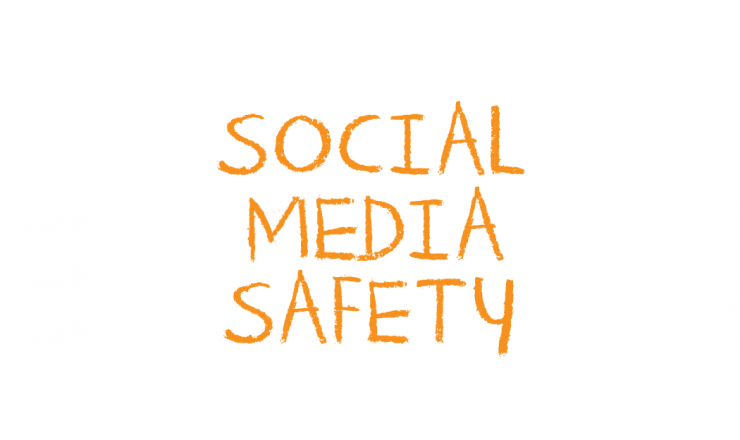Consent
Note: This page contains information about sexual assault.
What is Consent?
Consent is permission for something to happen. When it comes to sex, consent is about all partners agreeing to a sexual act. This page looks at consent in a sexual health context and ways we can recognize, talk about, and use consent.
We often think about consent in the context of sex but it can exist in any interaction with another person, from holding hands to hugging to sex involving genitals. When we think about consent, we take into account how we think about our bodies, how they work, our comfort with touch, and how we interact with people. Consent involves communicating our decisions about our bodies and finding out about others’ decisions about their bodies, so that everyone involved is clear about what we would like to do, when, and how.
Consent for sexual intimacy with partners can be communicated verbally and non-verbally, and can be re-negotiated throughout sexual encounters or over the course of relationships. Talking about consent can help make sex more pleasurable, and help us to have the kinds of experiences we want.
Consent exists when everyone involved can willingly give, withdraw, and negotiate permission. Each person involved should feel free to share their positive, negative, and ambivalent feelings.
Consent must be:
Mutual
Everyone involved agrees to what’s happening
Continuous
Negotiated throughout as an ongoing process
Asked for each time for every act
Yes to one thing doesn’t mean yes to everything
Stoppable
Anyone can change their mind at any time
Communicated
Silence or lack of resistance is not the same as permission to proceed
Types of activities people negotiate consent for include:
- Holding hands
- Taking clothes off
- Lights on or off
- Hugging
- Exhibitionism (public sex)
- Penetration (vaginal, anal)
- Public displays of affection
- Oral sex
- Adding partners
- Safer sex strategies (e.g. using or not using condoms)
- Power play/BDSM (e.g. hair pulling, choking)
- And many more
Boundaries and Boundary Crossing
Boundaries and consent work together. Boundaries are the limits we set based on our needs, desires, values and choices. They are the lines between the things we want and consent to and the things we don’t.
Boundaries can help us feel safe and empowered: naming our boundaries reminds us and others that we all have the right to invite what we want and what feels good for us and stop what we don’t want and what makes us feel uncomfortable.
In a sexual context, when boundaries are crossed, it is considered sexual harassment or sexual assault. If you feel like your boundaries have been crossed, remember that support exists. We have included some options for support at the end of this page.
Race, gender and other power dynamics can affect how boundaries are made and when they are crossed. For example, sexual violence disproportionately affects people who are marginalized because of their gender, like women and trans and non-binary folks. It’s important to be aware of how different power dynamics can make people feel more or less comfortable making and enforcing boundaries.
Consent has not been Given:
If someone says “no”, “stop” or “don’t”.
Listen to and respect these words, and stop what you are doing. Remember, as activities progress and circumstances change, an enthusiastic “yes” might become “maybe” or “no”. It is normal and okay for people to change their minds during a sexual activity.
If someone is using physical force against someone else without their permission.
This can include things like pushing, holding down, or aggressive touch.
If someone is being coerced.
Coercion is when a person tries to intimidate, force, or manipulate someone else into sexual activity without the use of physical force. Coercion is often used to gain power and control over someone. Some examples include:
- Manipulation – e.g. “If you loved me, you’d hold my hand in public.”
- Threats – e.g. “I’ll tell everyone you’re a slut if you don’t.”
- Pressure – e.g. “But you’ve been flirting with me all night.
- Badgering – e.g. “Come on let’s kiss.” [5 mins later] You sure you don’t want to make out? [5 mins later] Seriously it’ll be so fun to kiss a bit. [5 mins later] It won’t even take that long. [5 mins later] We’re already cuddling.”
If someone involved is asleep or unconscious.
Consent can only be given when a person is conscious.
If someone uses tricks or deception.
Consent can only be given if you know what you’re agreeing to. For example, if someone secretly removes a condom without their partner’s knowledge, their partner has not given consent.
Clarification may be needed when:
Someone communicates with body language.
If a person makes eye contact, smiles, leans in, or touches someone else in a manner that might be perceived to be friendly, flirtatious or even sexual, it does not automatically mean that the person is asking for more or is consenting to sexual activity. Sometimes, though, we communicate non-verbally. Non-verbal communication can include pointing, pulling someone in, or nodding or shaking your head. Non-verbal communication can still be clear. Sometimes you might get cues of resistance from your partner(s), like rolling away, wincing, or brushing a hand away. It is important to acknowledge these cues by stopping and checking in
If you’re ever unsure, just ask. Even people who know each other well can get their signals confused. It is important to make sure everyone is on the same page.
There has been previous sexual activity.
Just because people are dating or have had sex before does not mean that consent is automatically present. Check in with your partner(s) about ways to make consent work for your relationship(s), and keep checking in over time.
There are substances involved.
If someone is really drunk or high they can’t consent to sex. But we know that people use drugs or alcohol and engage in sexual activity. When this happens, ongoing communication is key. Some things to think about include:
- Can your partner(s) respond clearly? Are their words slurring?
- Do they seem to know what you’re asking?
- Are they fading in and out?
- Are you clear-headed enough to read their cues?
Take these questions into account before starting/continuing sexual activity. Stop, wait, and ask again later (maybe after a good sleep) if anyone involved doesn’t seem fully aware of what’s going on.
There are big power differences between the people involved.
When someone holds significant power over another person (e.g. boss/employee, professor/student, or a big age difference), it’s hard to be sure that the power difference isn’t influencing the decision to engage in sexual activity. For example, if a student wants to stop having sex with a professor, they may fear it will affect their grades.
Someone seems ambivalent.
If someone is pulling away or seems reluctant, stop what you’re doing. If they seem nervous or undecided, slow down or stop and check in to make sure they still want the thing you’re doing to continue.
Communicating Consent (or, “I like it when you…”)
Consent is an important part of all relationships. It can be helpful to communicate your boundaries before engaging in sexual activities, like over a dating app, on a date, or on the trip home from one. Talking about what you’re into and what you’re not, your curiosities and desires, and checking in throughout can make sex hot! While it can be tricky to have these discussions about desires and limits, like any skill, it gets easier with practice.
Here are some examples you could try:
Checking desires
- How do you like to be touched?
- Is it okay if I take your shirt off?
- Does this feel good?
- This turns me on…Can we do it?
Communicating desires
- Please kiss my…
- I love it when you lick my…
- Could you move your hand slower?
Setting limits
- I would like to just cuddle for now.
- I don’t want to do that.
- Let’s go back to just making out.
- I’m okay with your fingers inside me, but nothing else.
- Let’s not do that, but I’d be into…
Even though it’s our right, sometimes it‘s hard to assert boundaries. If someone uses a question or softer language to set a limit, it’s equally valid. For example, it’s still a limit if someone says:
- Can we just cuddle for now?
- I don’t think I want to do that yet.
- Can we go back to just making out?
Different ways of communicating consent
Some folks use sign language or written messages to communicate. These are valid and effective ways to communicate consent.
Some relationships involve purposeful power differentials, like in BDSM, kink, and leather communities. These communities have specific ways of navigating consent. For example, some people use a safeword they choose and agree on to stop an activity instead of “no” or “stop”.
Saying No
Saying no is okay. It establishes a clear boundary. It can be hard though: you might experience feelings of guilt, uncertainty or fear. These feelings are normal, but you deserve to have your boundaries respected. If feelings like this are preventing you from setting and/or maintaining boundaries, consider talking about them with someone you trust or reaching out to a resource like the ones listed at the end of this page for support.
How to handle hearing no
If a partner says no or sets a boundary, you may feel rejected or angry. It is okay and normal to experience your feelings, but it is not okay to use those feelings to make someone feel guilty or to manipulate or force them into doing things they don’t want to do. If you feel worried about rejection, check out our Dealing With Rejection info page to learn more about how to handle it.
Legal Age of Consent in Canada
The age of consent for sexual activity is 16 years old.
There are also special rules for sexual activity for those who are “close in age” or in the same “peer group”. (It’s important to be aware that these age differences are calculated to the day.)
- 12 and 13 year olds can consent to sexual activity with someone less than 2 years older than them.
- 14 and 15 year olds can consent to sexual activity with someone who is less than 5 years older than them.
- There are some things you must be 18 years old to legally consent to, including sex work, working in pornography, and engaging in sexual activity with someone in a position of authority, trust, or dependency, like a teacher, coach, or babysitter.
If you want to know what the law says, check out: http://www.justice.gc.ca/eng/rp-pr/other-autre/clp/faq.html
Sexual Assault Resources in the GTA
- Toronto Rape Crisis Centre/Multicultural Women Against Rape (416-597-8808; crisis@trccmwar.ca; trccmwar.ca)
- Women’s College Hospital Sexual Assault/Domestic Violence Care Centre (416-323-6040; bit.ly/WCH-SADV)
- Assaulted Women’s Helpline (416-863-0511; awhl.org)
- Hope 247 (1-800-810-0180; hope247.ca)
- Victim Services Toronto (416-808-7066; victimservicestoronto.com)
- Women’s Support Network of York Region (905-895-7313; womenssupportnetwork.ca)
Sexual Pleasure Resources in the GTA
- Come As You Are (416-504-7934; comeasyouare.com)
- Good for Her (416-588-0900; goodforher.com; 175 Harbord St., Toronto)
For a downloadable resource on this topic, please visit Planned Parenthood Toronto Factsheet Database.
If you have questions about this topic, feel free to contact one of our peer educators. [Link]
Last Edited: May 2020






